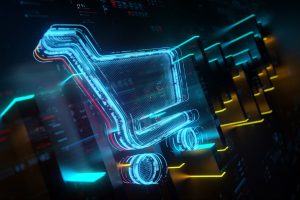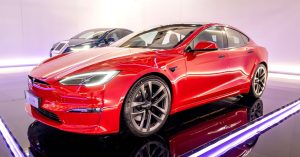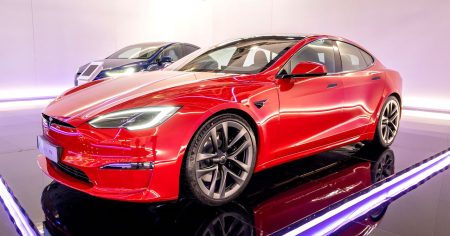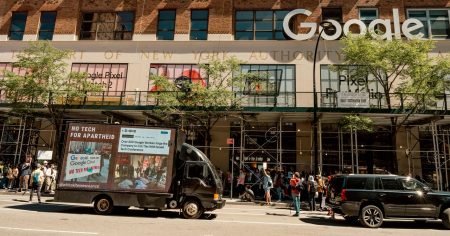Omar Al-Massalkhi, CEO of Talkin’ Tacos.
It’s often hard for emerging brands to grasp the importance of consistency, especially how to achieve it in today’s new global marketplace. It may seem that slapping the same branding elements such as logo and color palette on a new location will do the trick, but think again.
Recognizable branding is essential, but it’s not the only prerequisite for success. It’s the consistency of customer experience that matters above all else. And it’s harder to manage than it seems, especially in the restaurant and retail sectors where there are a multitude of customer touchpoints.
Consider a few of the more successful global brands, which were at one time the brainchildren of solo entrepreneurs like Ray Kroc and Steve Jobs. They may have begun with literally “a dollar and a dream,” but look at the amazing journey that their big ideas have taken.
Equitable Vs. Identical
At the core of consistent customer service is a bit of counterintuitive logic. According to branding expert Nataly Kelly, writing for Harvard Business Review, “Making local experiences equitable doesn’t mean they have to be identical.”
Companies in the food business need to look no further than a local Starbucks for inspiration. The core menu is the same from coast to coast. However, globally, the company might offer less popular items at a lower price point, or not offer them altogether. Product offerings are equitable, and while the customer experience is not identical, it remains tied together by branding as well as by technology—apps, ordering platforms, POS and others.
While not every business owner is considering global expansion, in today’s marketplace, it’s important to think globally at the outset.
Consistency Through Technology
What all successful brand expansions have in common is consistency. How do we define consistency? Technology business experts call it “the CX,” and say “The core idea of a consistent customer experience is that with every experience, a customer knows what to expect across all channels, all touch points, every time they interact with the brand.”
What they also share is a reliance on technology to support their CX. Where would Apple stores be without the capability to schedule an appointment at the Genius Bar? How would McDonald’s accurately capture order details without its robust POS platform? Consistency in the restaurant business may be the hardest to achieve because it relies on aligning so many different operational efficiencies across locations, and retailers have similar pain points, too.
• Product quality and quantity
• Service speed and efficiency
• Staff interaction
• Cost variables
Each of these considerations can be supported by technology. When deployed properly and universally, consistency is all but assured.
Drilling Down On Capabilities For Consistency
It sounds simple: Find the right platform and software, and voila, there is consistency. Oh, if only. However, there are three basics to begin to build a suite of solutions that support a holistic, consistent customer experience in the food sector and similarly to retail.
1. Making A Strong First Impression: While the human element of training the front-of-house staff can’t be minimized, a guest reservations and table management platform ensures the best first impression. It means the hostess can greet the guest by name and manage a table plan that seats them quickly and comfortably—and the same process gets replicated in every location.
Even in quick-service restaurants (QSRs), counter staff efficiency matters, especially as kiosks are more frequently logging orders. For retail, back up the “may I help you” with the capability to quickly locate precise merchandise, perhaps by deploying smart labels.
2. Making The Kitchen Count: A kitchen display system that streamlines back-of-house processes, automating them wherever possible, ensures customer satisfaction by efficiently managing course timing, maintaining precision and consistency in recipe execution, and presenting dishes exactly as intended. For QSRs, that kitchen system is even more important in delivering speed. In a retail environment, make the back-of-house stockroom part of the selling floor by having in-the-moment data on everything you have.
3. Making the Enterprise Accountable: Consider implementing an enterprise-wide system to gather data and metrics for accurate forecasting, tracking customer data and other metrics related to cost control, ordering and location performance comparisons. There is valuable data to be mined from macro and micro restaurant and store locations, which can and should be the basis of all decision-making at the corporate level.
According to Hospitality Technology, “A negative experience in your restaurant, whether it’s the service, food or atmosphere, is a case of inconsistency.” The corollary is that a consistently positive experience in service, food and atmosphere drives customer loyalty. The same applies to retail: service, products and atmosphere.
Maximizing Marketing Elements
Technology also ties together branding elements—from color palettes, fonts and logos to tables, chairs and displays. The website and kiosk or e-commerce site are good examples. Each branding element should have a home on each of these vehicles, from the tagline and menu to the photographs of individual dishes and interior design presentation. Same for retail chains. Use the website to recreate an in-store shopping experience as closely as possible.
Each location should also be provided with a comprehensive branding document, advertising “slicks” and logos to develop their local assets, in total lockstep with the organization. Any misstep on branding in marketing will confuse the audience. Can you imagine a McDonald’s with lime-green arches instead of golden ones? Of course not.
Everything that can be specified at the corporate level should be required at the local level. That doesn’t mean additional cost for the location or franchisee to adhere to the restrictions. Quite the contrary; economies of scale are created when branding elements require little customization beyond a change of address.
A consistently positive customer experience comes down to one thing, and that is the willingness of the operator to make being consistent the number one priority. “Keep them coming back for more” is more than just a catchy business phrase; it’s a solid mantra for global success.
Forbes Business Council is the foremost growth and networking organization for business owners and leaders. Do I qualify?
Read the full article here









